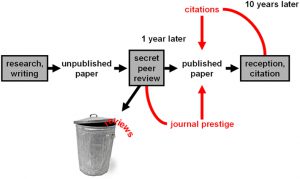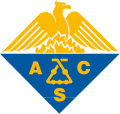

In academia, it is absolutely essential for a researcher to publish papers in different peer-reviewed journals of a particular field of study. In this way, researchers present their work to the scientific community. “Publish or Perish” is the mantra of scientific publishing.
In fact, a researcher is considered to be productive only when he or she publishes a decent number of papers in high quality journals.The scientific publishing process is exhaustive for any researcher. A researcher has to select an appropriate journal for publishing his or her paper. The researcher has to then go through the comprehensive review process of the journal.
Finally, the paper is published in the journal after undergoing minor or major revisions. Nevertheless, papers published in peer-reviewed journals are seen as stepping stones towards a successful career in academia. These papers are considered by authorities approving research grants and funding.
Most international researchers find it difficult to select a suitable journal for manuscript publication. Remember, even if the paper includes some path-breaking results, it may not get adequate recognition in the scientific community if it is published in an unsuitable journal.
Moreover, a paper that does not fit within the scope and objectives of a journal is often rejected by editors. Due to these reasons, journal selection is the most important step after manuscript preparation. In this article, we recommend five points for selecting an appropriate journal for manuscript publication.
1. Take a look at the reference list to know the journals recommended by experts
In an academic paper, authors usually cite a large number of references. The authors must take a look at the journals in which the cited articles are published. There may be instances wherein many papers have been published in the same journal. In such cases, authors must find out if the published papers have content that is related to their manuscript. If the answer is yes, then they may consider the journal suitable for publishing their manuscript.
2. Compare the scope and objective of the journal with the aim of the study
Authors must determine whether the aim of their study matches with the scope of a journal in their field. In general, a journal’s website will always provide the scope of the journal. The journal’s website also provides a significant list of criteria that must be satisfied by an article submitted to the journal.
Thus, authors can get a clear picture of whether their manuscript is suitable for publication in a specific journal. Let’s understand better with an example: the Journal of Molecular Biology only publishes articles that describe various topics of molecular biology, which includes gene expression, cell signaling, and DNA replication.
3. Cautiously consider SCImago Journal Rank and Journal Impact Factor
The journal impact factor is a metric that reflects the quality of a journal. This metric indicates the average number of citations received by published articles of a journal over a period of one year. The SCImago Journal Rank (SJR) is based on a specific algorithm that measures the ranking of a journal. Thus, the metric SJR can be considered to be a good alternative to the journal impact factor.
In general, the impact factor and SJR of a journal are published on the journal’s website. The quality of a journal can be assessed from these metrics. It is prestigious to publish in journals with high impact factor. Researchers find it easy to get recognition and funding when they have a list of publications in journals with high impact factor. Nevertheless, the rejection rate of these journals is very high, and the quality of a journal is not solely determined by its impact factor.
Some scientific publishers display on their website a list of journals and their impact factor. The most widely-known list is the Journal Citation Reports (JCR), which is published by Thomson Reuters. In general, a researcher has to be affiliated to an institution or university to access this report. The publisher Elsevier has come up with Scopus database, which freely provides the list of international journals with SCImago Journal Rank (SJR).
4. Consider the turnaround time of the academic journal
In general, the process of peer review governs the turnaround time of an academic journal. The peer review process directly determines the quality of published articles. The journal’s website will usually display the date of submission and the date of publication of an article. Based on this information, authors can fairly estimate the journal’s turnaround time.
Alternatively, researchers can determine the journal’s turnaround time by counting the number of articles published by the journal in a particular year. Academic journals may be published monthly, quarterly, or annually. However, the peer review process is accelerated by journals that use an online submission system for accepting manuscripts.
5. Consider the journal’s constraints
Before submitting their manuscript to a journal, authors must thoroughly read through the “instructions to authors” webpage. They can thus avoid situations where they have not complied with manuscript preparation guidelines of a journal. For example, most journals have set a wordcount limit for their articles. In case an article does not fulfill the wordcount limit, it is rejected outright by the journal’s editors.
Another cause of concern is the cost of publication. Researchers from developing countries do not really have the budget to fulfill the high cost of publishing in high impact journals. They should consider publishing in less-known journals that do not charge publication fees from authors.There are thousands of academic journals, so selecting the right journal for manuscript publication can be an intimidating task.
Harrisco is an academic editing company that offers “journal selection help” to authors. Remember that submission to a wrong journal not only attracts rejection but also wastes precious time and resources. It is not easy to publish in peer-reviewed academic journals, but Harrisco guides the authors through the complete publication process and ensures that their work gets published in high-quality journals.
Besides, Harrisco also offers academic editing, peer review, and translation services. Moreover, it regularly holds academic writing workshops for international researchers, thereby bridging the barrier between academia and publishing.





